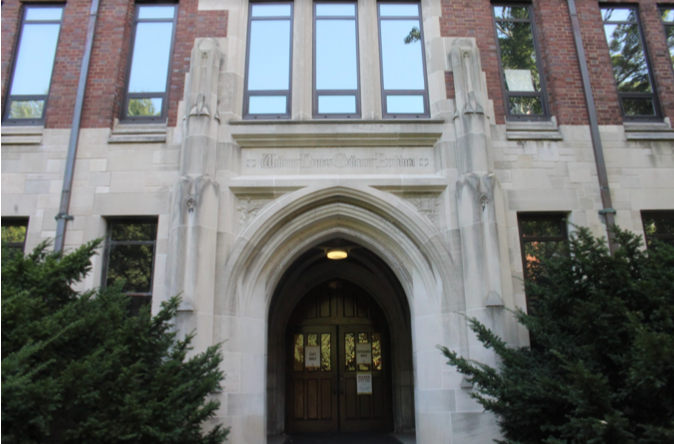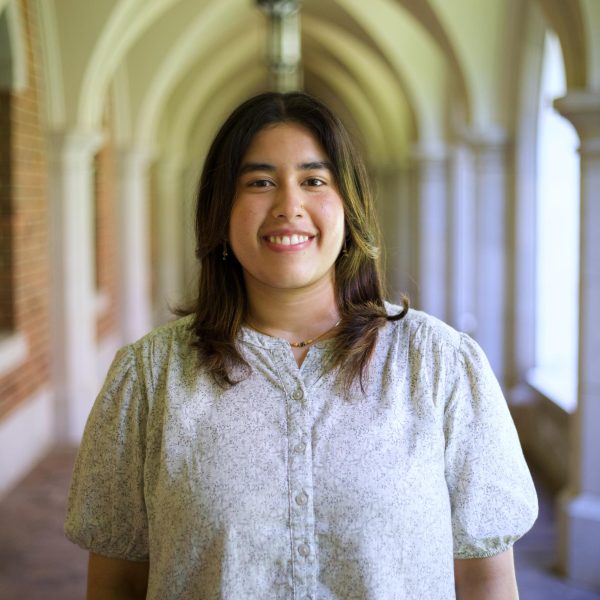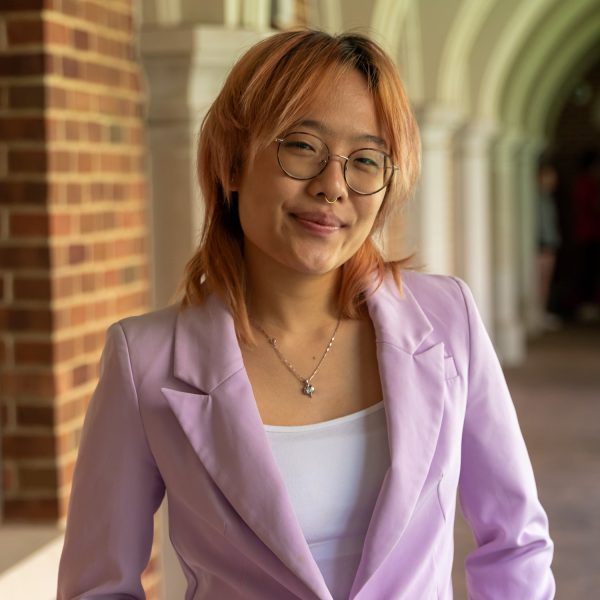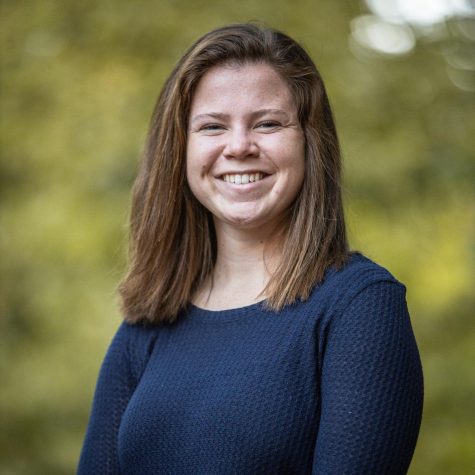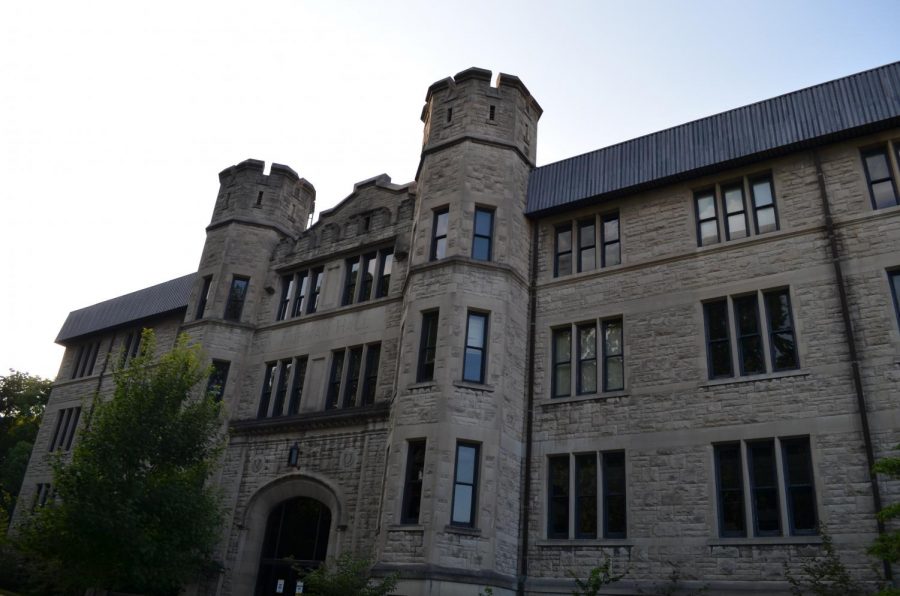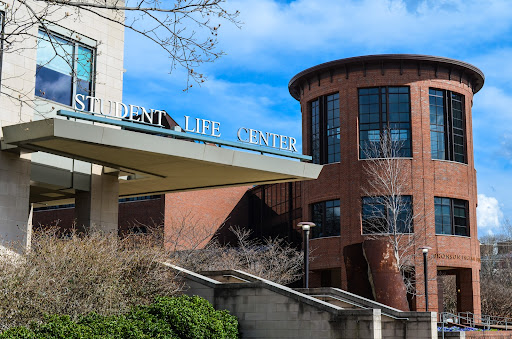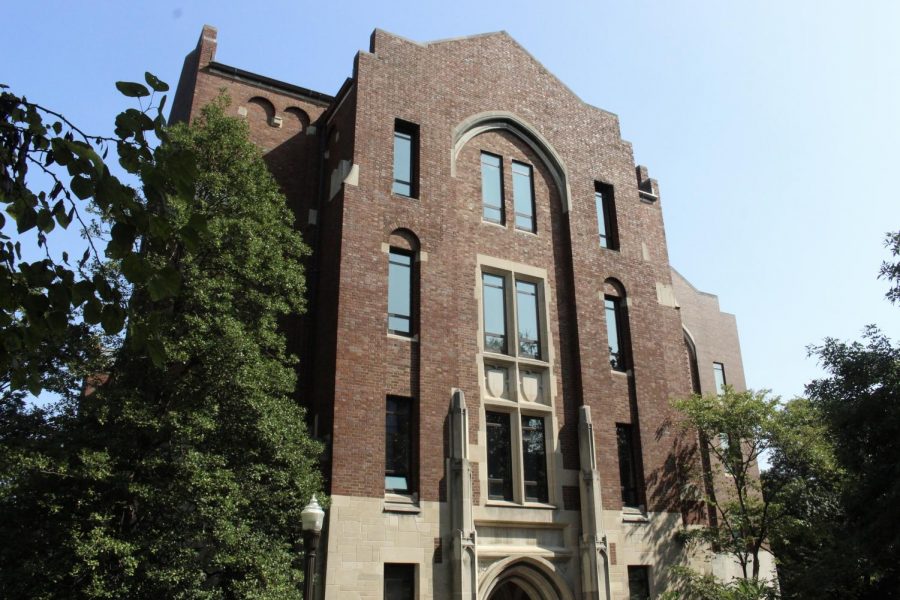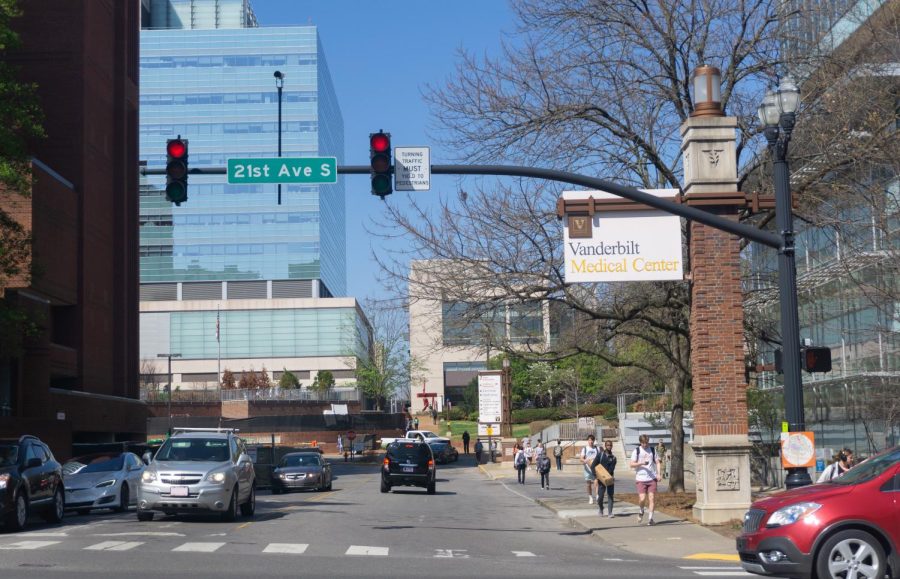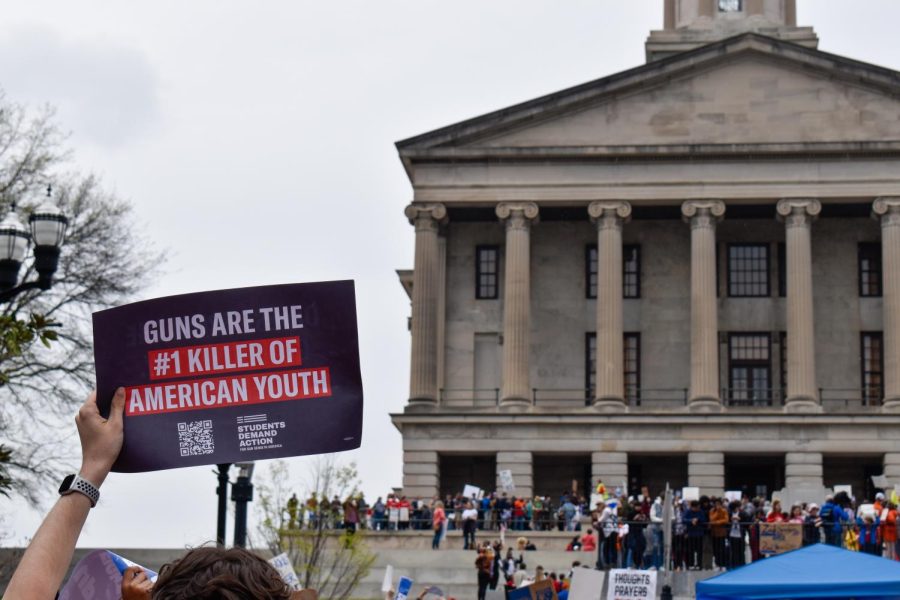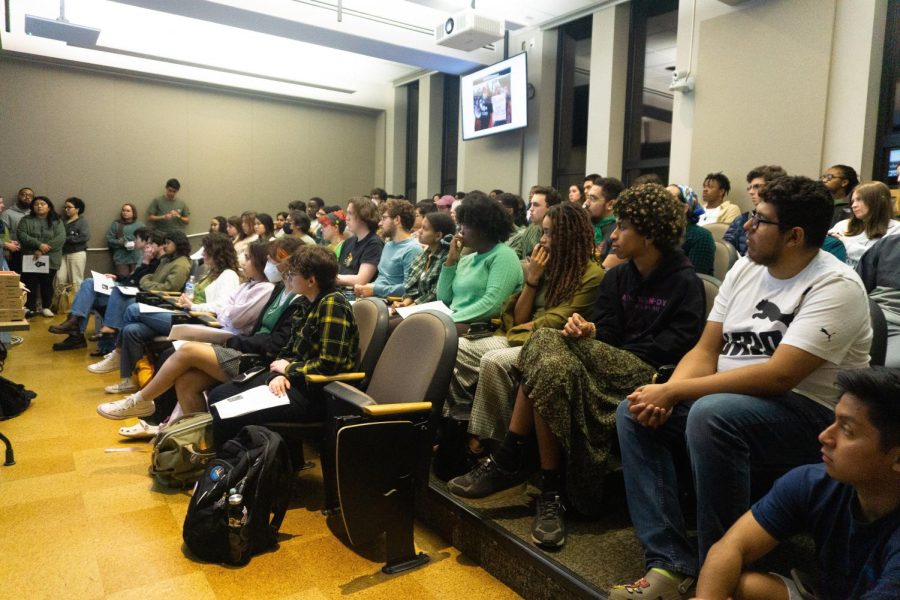UPDATED: This article was updated on Feb. 28 at 12:20 p.m. CST to reflect the Multicultural Leadership Council’s involvement in planning the Legacy Tour.
Hidden Dores and the Multicultural Leadership Council held the second annual Legacy Tour on Feb. 23. The tour took students to four campus buildings — Elliston Hall, Calhoun Hall, Garland Hall and McTyeire Hall — to explain the history of the buildings’ namesakes and advocate for their renaming.
The Legacy Tour was an initiative launched by former VSG president Hannah Bruns (‘22), Hidden Dores and MLC to bring awareness to the fact that several university buildings are named after previous slaveholders. According to Hidden Dores president Induja Kumar, a junior, Bruns hoped educating more students would progress the movement of getting the buildings renamed. This year’s tour was led by juniors Noah Ford and Kennedy Ringer, members of Hidden Dores. MLC Advocacy Chair and senior Virali Patel reached out to Bruns and organized the logistics of the tour with the help of Kumar and Ford.
The movement to rename these four buildings started several years ago. In 2019, VSG passed a resolution calling for the renaming of several buildings on campus in an effort to maintain the university’s commitment to diversity and inclusion. This came after the renaming of Memorial Hall in 2016 from “Confederate Memorial Hall”, which also removed the inscription “Confederate” that was on the building since its construction in 1935. To be able to remove the inscription, the university repaid the Tennessee Division of the United Daughters of the Confederacy $1.2 million, which had been contributed to the building’s construction and naming rights in 1933.
Junior Omotayo Fasan attended the tour to learn more about the history of Vanderbilt, and she was shocked to find out she takes classes — including about racial justice — in buildings commemorating racist individuals.
“To realize that I take classes about race in buildings named after people who believed I should be enslaved is wild,” Fasan said.
The university did not immediately respond to a request for comment regarding the renaming of the buildings.
To kick off the tour, students gathered in front of Kissam Hall, where Elliston Hall — a part of Warren College — is located. It is named after Elizabeth Bodie Elliston, wife to a Confederate soldier and the daughter-in-law of former Nashville mayor Joseph T. Elliston. Joseph Elliston was the owner of a 360-acre plantation that enslaved over 20 individuals and provided a safe house for Confederate soldiers during the Civil War. Elizabeth Elliston donated a section of this land to Vanderbilt, which was used to establish parts of the original campus.
“This is the same woman that former Chancellor Zeppos described as an inspiring scholar and societal leader when dedicating [Elliston Hall] and Warren College in her honor,” Ringer said.
The next stop on the tour was Calhoun Hall, named after William Henry Calhoun. Calhoun was a silversmith in Nashville and owned almost $4 million in property at present value when he died in 1865. He used enslaved people to maintain his properties.
“With all this success, one cannot help but wonder if some of it [Calhoun’s success] needs to be attributed to the people [enslaved by] Calhoun,” Ford said.
Calhoun’s daughter, Mary Ella Calhoun Foote, left most of her money and property to the university after her death in 1918, and she made former Chancellor Kirkland the executive of her estate. She wanted her donation to be used to create a building on campus, so it was used to create Calhoun Hall in honor of her father.
The third stop on the tour was Garland Hall, named after the first chancellor of Vanderbilt. Before becoming chancellor, Landon Cabell Garland had enslaved roughly 60 people while living in Alabama, and his biographer claimed he took “special interest” in his female slaves.
Assistant Dean of Students Traci Ray, who attended the Legacy Tour, said that there may be some ‘political’ barriers making it difficult to change the name of Garland Hall because he contributed many things during his time as chancellor. Unlike the renaming of Confederate Memorial Hall, repaying the donors would not solve the entire problem.
“It would mean other things attached to his name would have to go, like the street [Garland Avenue],” Ray said. “It’s political because it’s not just about this building; it’s about anything else he touched.”
The final stop on the tour was McTyeire Hall, named after the first president of the Board of Trust, Bishop Holland N. McTyeire. McTyeire was born into a slave-holding family in South Carolina. McTyeire believed slavery was “divinely established” and slave masters had a responsibility to teach their slaves Christianity.
“Even though he founded the university, VSG believes his ideologies on slavery are inconsistent with Vanderbilt’s values,” Ford said.
Following the tour, a discussion was led by MLC advocacy chair Virali Patel, a senior. The students talked about their thoughts on what they learned during the tour, as well as Vanderbilt’s refusal to adopt a land acknowledgement regarding the university’s occupation of Native American land.
Kumar said their goal for future tours is to advertise to people who have no knowledge about this side of the university’s history.
“It’s important for people in spaces which have more power on campus to also be a part of the discussions we’re having in order for everyone on campus to truly understand the weight of this history,” Kumar said.
Editor’s Note: Kumar formerly wrote for the Opinion Section of the Hustler.

